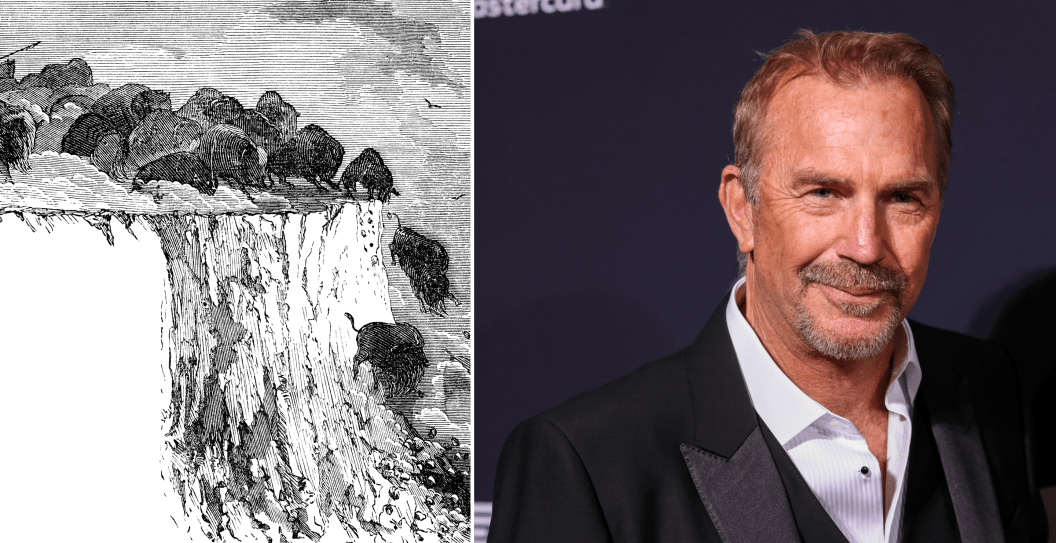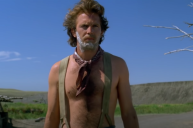Kevin Costner can't seem to stay out of courtrooms this year.
Videos by Wide Open Country
The saga of a colossal sculpture depicting 14 buffalo chased by Lakota warriors, commissioned by Costner, reached a new chapter as the South Dakota Supreme Court ruled to see a trial brought forth by the artist. This rare courtroom triumph for the sculptor comes after a long battle spanning 15 years, seeking copyright recovery and Costner's obligation to sell the work.
The tale began in the 1990s when Costner, fresh from his successes with Dances With Wolves, enlisted Peggy Detmers, a former U.S. Forest Service biologist, to craft 17 larger-than-life bronze sculptures portraying Lakota warriors herding buffalo off a cliff. This masterpiece, set to be the world's third-largest sculpture, was intended for Costner's planned luxury resort, The Dunbar, near Deadwood, South Dakota.
Complications arose as the Lakota People, whom Costner admired and featured in Dances With Wolves, opposed the resort's construction due to land disputes. Detmers halted her work, sparking negotiations. Ultimately, an agreement was reached: Costner would pay her $60,000, vowing to sell the sculpture if the resort was not built within a decade, with proceeds evenly split.
Costner shifted gears, opting for a different attraction on the same land, called Tatanka: Story of the Bison, housing Detmers' sculpture, now named "Lakota Bison Jump." Despite the resort's transformation, Detmers contested that her work wasn't "agreeably displayed elsewhere" and sued in 2008 for the sculpture's sale and copyright transfer. The case made it all the way to trial, where the circuit court found in favor of the actor, concluding that Tatanka was "elsewhere," and that the sculpture was thus "agreeably displayed." Detmers appealed, and in 2012, the South Dakota Supreme Court sided with Costner, finding, "the circuit court did not err in concluding that Tatanka was 'elsewhere' under the language of the contract."
That's where things stood— "Lakota Bison Jump" on display, costing $12 per admission, its gift shop bustling with statuettes and tee shirts of the piece, and Detmers receiving her royalties. Somewhere along the line, Costner sold the surrounding land of Tatanka, the site previously slated for The Dunbar.
Then, in 2021, Costner threw a curveball. He listed the land with Tatanka, explicitly clarifying that the sculpture itself wasn't up for grabs but would be "relocated by the seller."
This set the stage for another legal showdown. In November 2021, Detmers filed another lawsuit. She argued that Costner had vowed to "permanently" exhibit the sculptures at Tatanka. She sought a declaratory judgment, asserting that if Tatanka was sold, so should "Lakota Bison Jump." Both sides filed for summary judgment, but the circuit court leaned in Costner's favor, reasoning that "permanent" didn't necessarily mean in the exact same spot forever.
Detmers appealed once more, and this time, the Supreme Court sided with the sculptor. Chief Justice Steven Jensen wrote: "Since the condition that 'the sculptures are not agreeably displayed elsewhere' is ongoing, Costner's decision to unilaterally sell Tatanka and relocate the sculptures would trigger the sale clause in paragraph three of the Agreement unless the parties agree to another display location."
"Under the plain language of the Agreement, the circuit court erroneously read 'not agreeably displayed elsewhere' to expire after ten years," the decision continues, adding that the reading "conflict[s] with the rules of grammar."
The case now returns to the lower court for trial.
In an email to Courthouse News Service, Detmers' lawyer wrote: "Peggy is very happy with the decision confirming her continued rights in the creation of the sculptures."
Costner's lawyer declined to comment.




